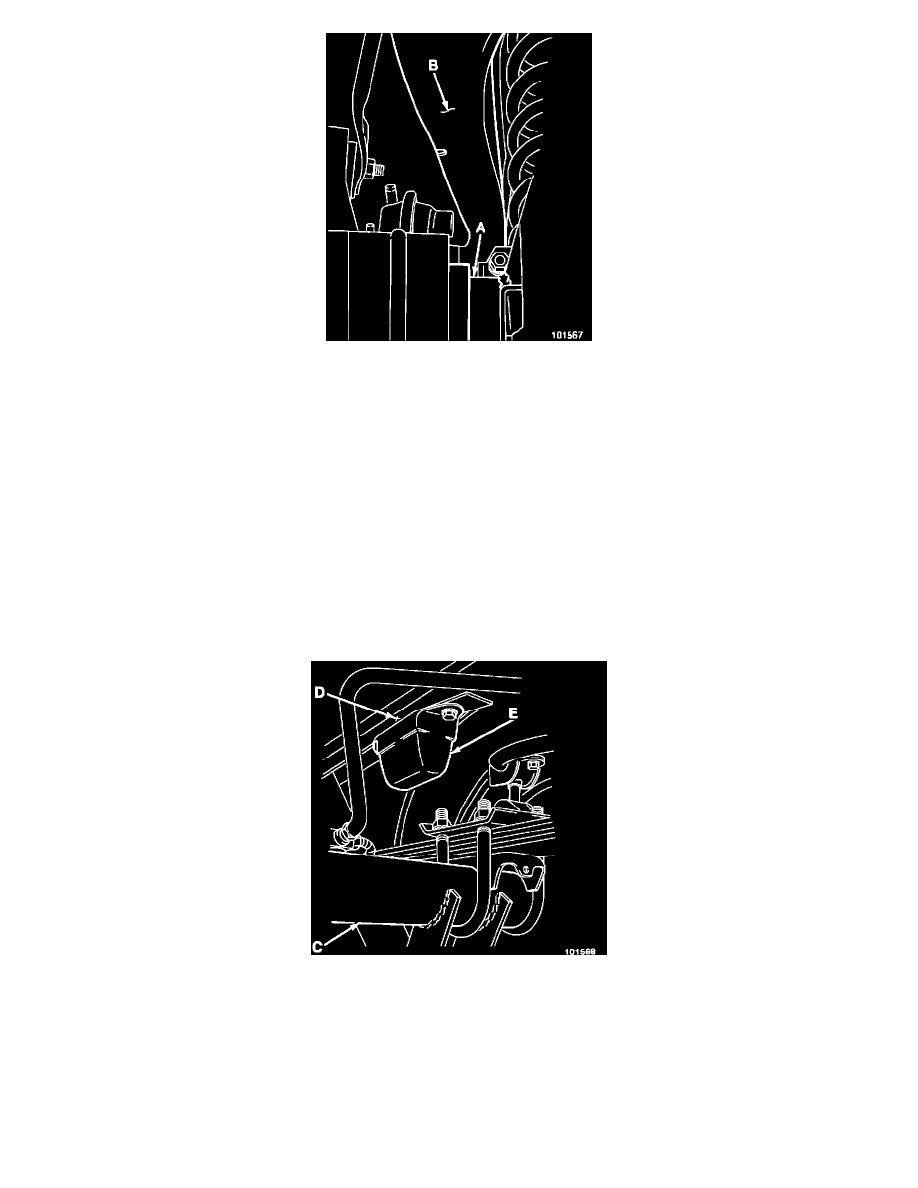Comanche 2WD L4-126 2.1L DSL Turbo VIN B FI (1986)

Fig. 2 - Side View of Axle Tube andFrame Sill
Checking Front Ride Height
Measure front ride height with the vehicle unloaded (no luggage or passengers) and with the fuel tank full.
Place the vehicle on a level surface and measure the vertical distance between the top of the axle tube (A) and the underside of the frame sill (B). Refer
to Figure 1 for driver's side measurement and Figure 2 for passenger side measurement. Be sure each measurement is taken from the top of the tube and
not from the axle or shift motor housings.
On two-wheel drive models, vertical distance should be 17 cm (6 3/4 inches) plus or minus 13 mm (1/2 inch). On four-wheel drive models, vertical
distance should be 20 cm (7 3/4 inches) plus or minus 13 mm (1/2 inch).
If height is not within specified limits, a spring change may be necessary. Changing spring rate by one lefter code will generally increase/ decrease front
height by 9.5 mm (3/8 inch).
NOTE:
In cases where different rate front springs are required, the spring with the highest alpha code (spring rate) should always be on the left
(driver's) side.
Fig. 3
Checking Rear Ride Height
Measure rear ride height with the vehicle unloaded (no luggage or passengers) and with the fuel tank full.
Place the vehicle on a level surface and measure the vertical distance between the top of the axle tube (C) and the underside of the frame sill (D) inboard
of the jounce bumper (E).
On two-wheel drive models, vertical distance should be 21 cm (8.2 inches) plus or minus 13 mm (1/2 inch). On four-wheel drive models, vertical
distance should be 23 cm (9.2 inches) plus or minus 13 mm (1/2 inch).
